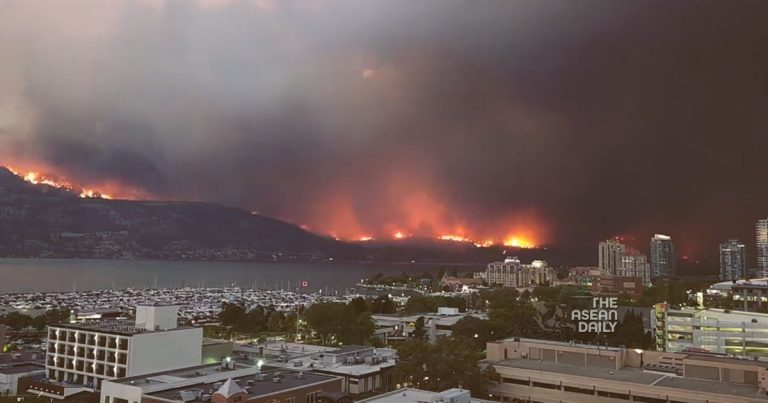20-8-2023 (VANCOUVER) Tens of thousands of residents in western Canada are fleeing as wildfires rapidly encroach on two major metropolitan areas. These separate blazes are the latest in a series of devastating wildfires that have scorched millions of acres across the country this summer.
Over a span of just a few days, wildfires in British Columbia and the Northwest Territories have prompted mass evacuations. According to estimates from the environment minister of the Northwest Territories, Shane Thompson, approximately 19,000 people were evacuated from Yellowknife, the capital, within 48 hours.
Yellowknife, which is home to around 20,000 residents, has turned into a ghost town following the largest evacuation ever witnessed in the region. The wildfires have been propelled by strong winds towards the city, but there was a slight respite on Saturday as overnight rain brought a significant drop in temperatures, as indicated by government weather forecasts.
Closer look into the fires of Alberta Canada ????#Kelowna #Kelownafire #Canada #Canadafire #Wildfire #BC #BritishColumbia #WestKelowna #wildfires pic.twitter.com/IGdYMp6LCR
— T R U T H P O L E (@Truthpole) August 18, 2023
In British Columbia, over 2,000 kilometers (1,200 miles) to the south, the city of Kelowna, with a population of 150,000 in the Okanagan Valley, is also under threat from approaching fires. Several properties have already been destroyed in West Kelowna, which is separated from the main city by Okanagan Lake.
Among the properties lost is the Lake Okanagan Resort, known for hosting high-profile politicians like former British Prime Minister Margaret Thatcher. Thick smoke has engulfed the area, making it difficult for many residents to breathe.
In total, approximately 15,000 people in British Columbia are under evacuation orders, according to Bowinn Ma, the Emergency Management Minister.
Prime Minister Justin Trudeau expressed his condolences for the “terrible loss” caused by the fires and met with evacuees from Yellowknife as they arrived in Edmonton, Alberta. There is currently no clear timeline for when they will be able to return home.
Of the 19,000 people who fled Yellowknife, more than 15,000 left by road, while 3,800 were airlifted. Around 1,000 essential staff members remain in the city and its surroundings, assisting with erecting defenses against the flames. Water bombers and the Canadian military have been deployed to provide support.
Tony Whitford, a former commissioner for the Northwest Territories and a long-time Yellowknife resident, commended the organizers of the evacuation, describing it as a smooth operation considering the complexity of evacuating 20,000 people.
Earlier, several towns and Indigenous communities were evacuated, and the displacement of Yellowknife’s population means that half of the near-Arctic territory’s residents have been forced to leave their homes.
Martha Kanatsiak, a 59-year-old Inuit retiree who has lived in Yellowknife for 28 years, expressed feelings of sadness and worry upon arriving in Calgary. She said, “I’m okay, but I feel sad and depressed and worried. I never saw something like this.”
Across the border in the United States, several thousand people in Washington state have also been compelled to evacuate due to wildfires, with at least one reported death. Around 185 structures have been consumed by flames in and around the town of Medical Lake, eastern Washington, with high temperatures and strong winds making firefighting efforts challenging.
Canada is currently experiencing a record-setting wildfire season, with official estimates indicating that over 14.0 million hectares (34.6 million acres) have already been burned. This is nearly double the area burned during the previous record of 7.3 million hectares. Tragically, four people have lost their lives thus far.




